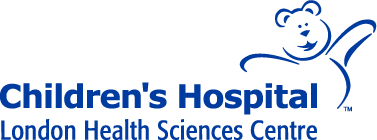Disclaimer to the Online Edition
This Manual has been designed for use in the NICU at London Health Sciences Centre (LHSC), London, Ontario, Canada, and represents clinical practice at this institution. The information contained within the Manual may not be applicable to other centres. If users of this Manual are not familiar with a drug, it is recommended that the official monograph be consulted before it is prescribed and administered. Any user of this information is advised that the contributors, Editor and LHSC are not responsible for any errors or omissions, and / or any consequences arising from the use of the information in this Manual.
azithromycin
Indication
- A macrolide antibiotic primarily used in neonates for the treatment of infections caused by Chlamydia, Pertussis and Ureaplasma
Dosage Guidelines
- General dosing for susceptible infection: 10 – 20 mg/kg/dose ORAL once daily x 5 days
- Pertussis Treatment or post-exposure prophylaxis: 10 mg/kg/dose ORAL once daily x 5 days
- Chlamydia conjunctivitis or Chlamydia pneumonia: 20 mg/kg/dose ORAL once daily x 3 days
- Ureaplasma respiratory eradication in extremely low gestation newborns: 20 mg/kg/dose ORAL once daily x 3 days
Administration
- Oral
Adverse Effects
- Vomiting, diarrhea, abdominal pain, feeding intolerance
- Prolonged Q-T interval on ECG
- Cholestatic jaundice
- Ototoxicity
Comments
- Azithromycin may inhibit caffeine metabolism. Monitor for tachycardia and reduce caffeine dose by 25-50% if present
- Monitor liver function tests, CBC with differential
- Monitor for infantile hypertrophic pyloric stenosis (most common symptoms are forceful projectile vomiting and persistent hunger)
Supplied As:
40 mg/mL oral suspension
References
LexiComp Sick Kids
